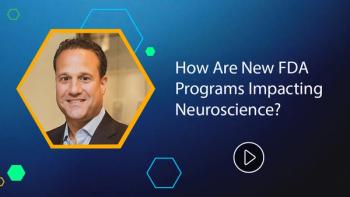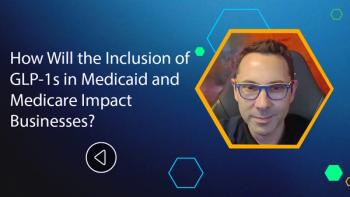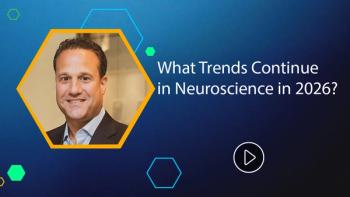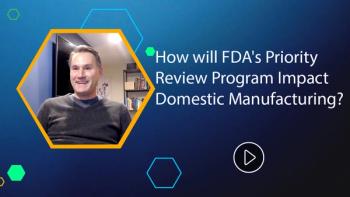
2023 Patient Access: State Legal and Regulatory Environment Survey Objectives and Strategies
In this Pharmaceutical Executive video interview, Jon Hamrick, Partner, Curatio Scientia Advisors and Jon Rawlson, President & Founder, Armory Hill Advocates, discusses how they went about testing their various hypotheses for the 2023 Patient Access: State Legal and Regulatory Environment Survey and how they collected the data.
Tell me about the hypotheses and objectives of the survey.
Jon Hamrick: Essentially the legislative and regulatory environment at the state level has gotten a lot more dynamic in the last few years. And in that, in that dynamic environment, you're seeing differences occur, where different states, sometimes it's a red state blue state thing, other times, it's just no matter which way the states generally lean, you're seeing a diverse group of legislation and regulation that comes to play that's impacting patient access programs, as well as the approaches that manufacturers particularly might take in supporting, you know, therapy, affordability, accessibility, as well as things that is happening in the state level around, you know, impacting areas such as accumulators, and maximize, and those sorts of things. So really, we just had a hypothesis that we wanted to sort of prove out, which was, you know, is patient access to prescription drug therapy affected by various state and local policies and regulatory parameters. And we don't believe there's really a formalized process for aggregating all of this dynamic activity that's happening at the state level. And so, we wanted to kind of validate and verify that and also assess that whether or not timely insights into what was happening in terms of legislation and regulation at the state level, around specifically patient access, and affordability. Would that help decision makers support programs and policies that would essentially allow greater access and affordability of these therapies?
Jon Rawlson: When you kind of zoom out a little bit, and you check the town, 10,000 square foot look or look, so to speak, you see that the states have been grappling with ever increasing line dynamics around the drug industry? And so how are they going to be able to provide drug benefit to Medicaid slash Medicaid, Medicare patients in these specific states, and what's going to fall apart as they're looking at how they best work on policies around affordability? And so, as we kept talking about this a little bit, we realize that states have been grappling with this increasing drugs spend for quite a long time. And so how are they you know, who's getting it who's benefiting adversely from this situation? And are we looking at that kind of data? Or are we picking up on any of that? And how was it informing public policy changes going forward?
Jon Hamrick: I think with that sort of background, the other thing is like, it's not to say that there's not a focus on state legislation and regulatory activity. It's just that in general, most of the focus in the past and even through today is focused on what's going on with the state Medicaid program budgets and are their coverage policy issues that are affecting access through the state Medicaid program and our you know, lens in our objectives were really around a broader as John said, you know, widening the aperture here, it really looked at the current landscape and assess a, the key parameters and potential value of state level access and timely access to polity policy and regulatory insights. And really to validate or invalidate the, the idea that there's no formalized process, as I was saying for aggregating that type of information around patient access and affordability, as opposed to just the Medicaid program budget and coverage policies, and then really to gain what we think of as key senior leadership, stakeholder perspectives industry, whether they be manufacturer payer, NGO or nonprofit organizations, pharmacy stakeholders, to really assess, you know how the prescription journey outpatient access is affected at the state level and by these policies and how they go about getting access to that information today. So that was really what we were trying to ascertain with the survey.
What strategies did you utilize to collect data from survey respondents? What groups made up the participants?
Jon Hamrick: I think we really leaned into Jon's expertise and experiences we thought about this. But really, our approach was to develop a blinded survey tool and an instrument where we went out to targeted industry executives across a database of folks that we have, representing both payers, consultancy pharma services or support service providers, and pharmacies themselves, and of course, pharma and biotech manufacturers. And we felt like we got a really nice representation, not only from those groups of stakeholders within the industry, but then within the organizations themselves. We had representations from legal government affairs, brand marketing, patient access, trade, obviously, a pharmacy operations and clinical folks. And then executive leadership teams, Representative 40% of the respondents. So, we basically sent that survey out to about 300, executives within industry, and we got a greater than 50% response rate. And then we just aggregated that information and went through the process of analyzing it.
Newsletter
Lead with insight with the Pharmaceutical Executive newsletter, featuring strategic analysis, leadership trends, and market intelligence for biopharma decision-makers.





